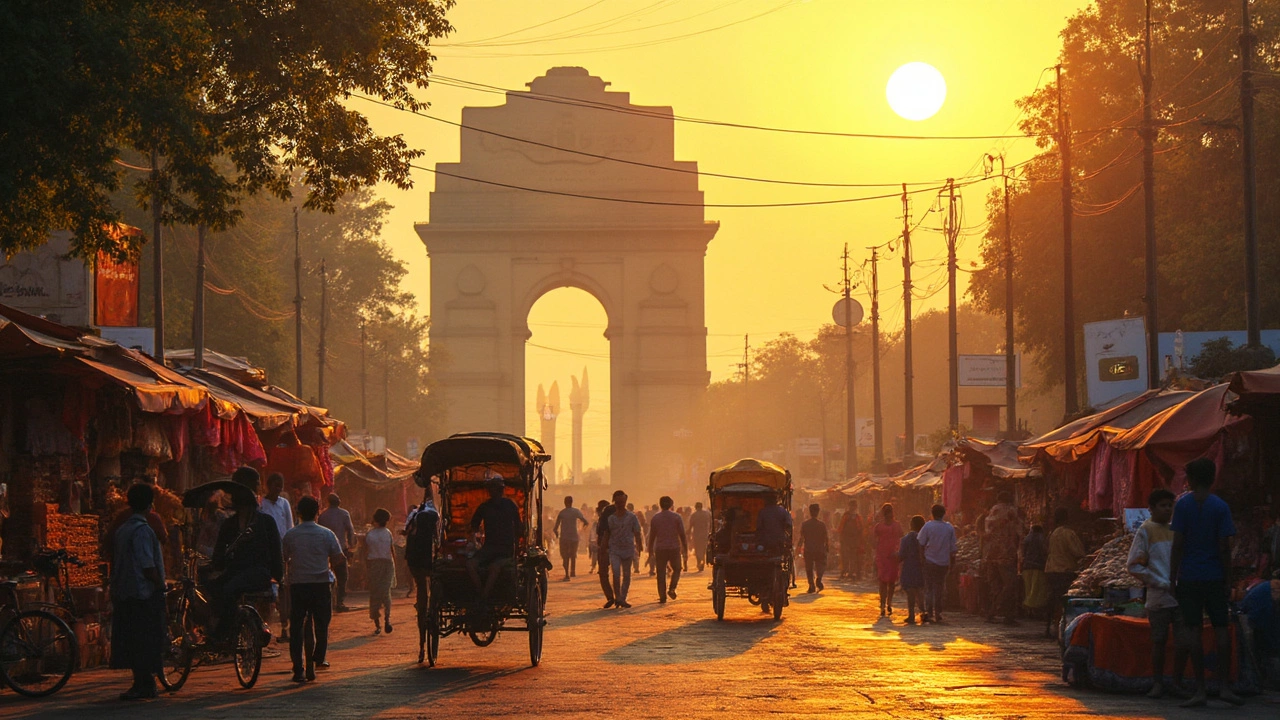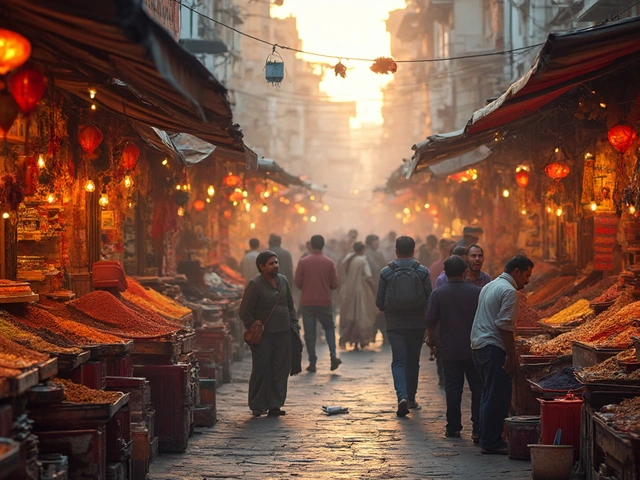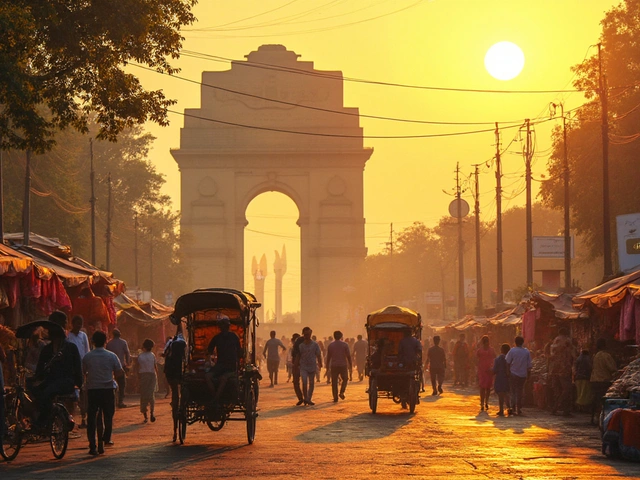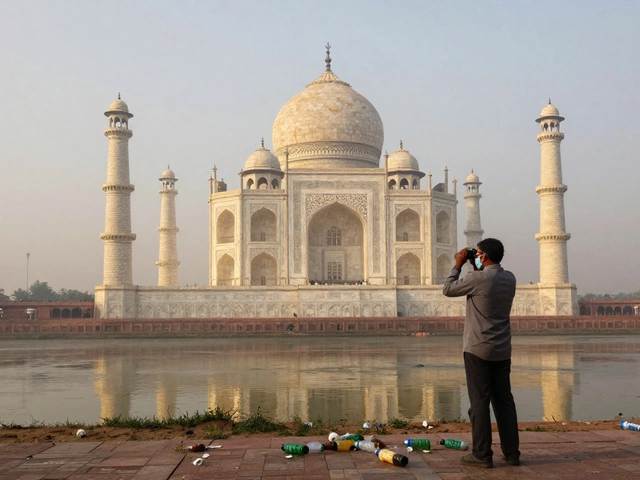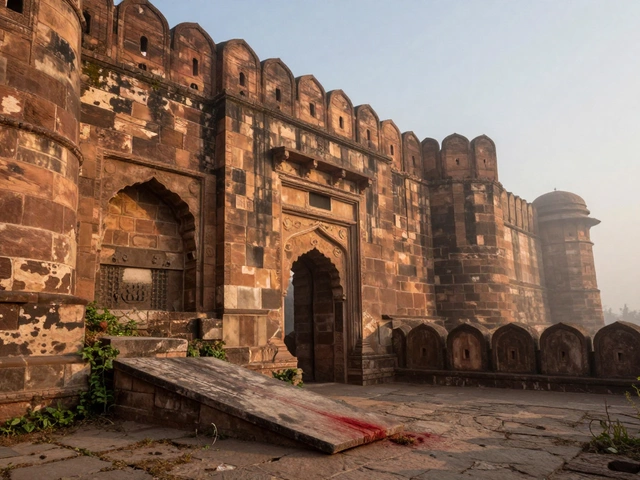India's Golden Triangle is a tourist circuit that connects the bustling cities of Delhi, Agra, and Jaipur. Known for its rich culture and vibrant history, it's a favorite among travelers who want a taste of India's diversity. But is it really worth all the hype?
Let's kick things off with Delhi. The capital city is a blend of the old and the new, jam-packed with history, architecture, and life. Think grand structures like the Red Fort, Humayun's Tomb, or the bustling lanes of Chandni Chowk. This city never sleeps!
- Introduction to the Golden Triangle
- Highlights of Delhi
- Agra's Majestic Sites
- Jaipur's Royal Charm
- Practical Travel Tips
- Conclusion: Is It Worth It?
Introduction to the Golden Triangle
The Golden Triangle is more than just a group of three cities; it’s one of the most famous travel routes in North India tourism. Formed by the locations of Delhi, Agra, and Jaipur, it’s like a triangle on the map, hence the name. This route is a top pick for travelers who are keen to see some of the country's most iconic landmarks and dive into its rich culture.
Why is it so popular? First off, the distance between each city is roughly 200-250 km, making travel manageable by car or train. It's common for newcomers to India to choose this circuit as it offers a balanced taste of India's urban life, architectural grandeur, and colorful past.
What Makes Each City Unique?
- Delhi: As India's capital city, Delhi is where the old meets the new. From ancient structures like the Red Fort to modern hubs like Connaught Place, it’s a whirlwind of experiences.
- Agra: The home of the Taj Mahal, one of the Seven Wonders of the World. Apart from this grandeur, Agra Fort is another site worth visiting.
- Jaipur: Known as the Pink City, Jaipur is famous for its royal palaces, vibrant bazaars, and the stunning Hawa Mahal, also known as the Palace of Winds.
Traveler Insights
Most travelers start their journey from Delhi, thanks to its international airport. From there, exploring the Golden Triangle can be done in a week or extended if you want a more leisurely pace. It’s a great introduction to India's history, culture, and hospitality.
Keep in mind that the best time to visit is between October and March when the weather is more forgiving. For those interested in festivals, planning your visit around Holi or Diwali can add an extra layer of excitement to your experience.
Highlights of Delhi
Delhi isn't just the capital of India; it's a gateway to the country's complexities. As part of the Golden Triangle, it offers an intriguing mix of attractions that reflect its long history and lively present.
The Red Fort
Kick off your Delhi adventure at the grand Red Fort, a UNESCO World Heritage site. Built by the Mughal Emperor Shah Jahan in 1648, this massive red sandstone fort is a remarkable example of Mughal architecture. It's a place where history isn't just read about; it's felt with every step you take.
Humayun's Tomb
Next, head over to Humayun's Tomb. It's not just a tomb – it's a precursor to the Taj Mahal, often said to have inspired the iconic building in Agra. The gardens here are perfect for a laid-back afternoon stroll.
Chandni Chowk
For those who enjoy the hustle and bustle, Chandni Chowk is a must-visit. It's one of the oldest markets in India and the streets are filled with everything from spices to textiles. Don't leave without trying some street food, like parathas at Paranthe Wali Gali.
India Gate and New Delhi's Modern Vibe
Make sure to check out India Gate, a war memorial that's often compared to the Arc de Triomphe. In this part of Delhi, you'll see the modern side of the city with wide streets and government buildings.
Practical Tips
- Best time to visit? October to March when the weather is cooler.
- Get around with the Delhi Metro – it's a lifesaver.
- Take note of local norms: dress modestly and be respectful of traditions.
Delhi truly offers a broad spectrum of experiences, from timeless historical sites to bustling bazaars, making it an essential part of any India travel itinerary.
Agra's Majestic Sites
Undoubtedly, Agra is synonymous with the Taj Mahal. This iconic symbol of love, built by Emperor Shah Jahan in memory of his wife Mumtaz, is one of the Seven Wonders of the World. Step into its mesmerizing beauty as you walk along the reflecting pool leading to the white marble mausoleum at sunrise—it's breathtaking!
Agra Fort
Another must-see is the mighty Agra Fort, a UNESCO World Heritage site. Once the main residence of the emperors of the Mughal Dynasty, it's a testament to the opulence and power of the Mughals. The red sandstone walls are just the beginning; inside, you'll find beautiful gardens, palatial halls, and impressive mosques.
Fatehpur Sikri
Just a short drive from Agra is Fatehpur Sikri, another UNESCO site. Founded by Emperor Akbar, this ancient city is a marvel of Mughal architecture. Walk through its abandoned palaces, courtyards, and mosques that speak of a grand past. Don't miss the stunning Buland Darwaza, the 'Gate of Magnificence'.
Consider These Travel Tips
- Best time to visit is from October to March for pleasant weather.
- Start your day early to beat the crowds at the Taj Mahal.
- Hire a guide for deeper insights into Agra's history.
Agra has more than just historical vibes—it also offers a unique shopping experience. Sadar Bazaar is perfect for picking up souvenirs like marble crafts and leather goods. Plus, don't leave without trying Agra's special sweet, Petha!
| Site | Distance from Taj Mahal |
|---|---|
| Agra Fort | 2.5 km |
| Fatehpur Sikri | 36 km |

Jaipur's Royal Charm
Jaipur, often called the Pink City because of its distinctive terracotta hue, is the gateway to Rajasthan's rich history and legacy of royalty. It's not just the colorful bazaars and bustling streets that capture attention, but the grandeur of its palaces and forts which stand out. Picture this: a city that was painted pink for Prince Albert's visit in 1876 as a symbol of hospitality—a tradition that still reflects in its warm culture.
Unmissable Sights
First on the agenda, you've got to see the Amber Fort. A massive complex sitting atop a hill, it offers stunning views of the surrounding landscape. Whether you're riding an elephant up to its gates or exploring its labyrinth of rooms and courtyards, the history here is palpable.
"Jaipur is the soul of India, where the walls speak the language of legends." - Rani Sahiba of Jaipur Palace
Then there's the City Palace, right at the heart of Jaipur. Part museum, part royal residence, you'll find everything from intricate carvings to an impressive collection of royal garments and weapons. Don't forget the Hawa Mahal, the 'Palace of Winds'—peer through its honeycomb windows for a view that's truly unique.
Shopping and Leisure
No trip to the Pink City is complete without diving into its vibrant markets. Johari Bazaar is where you’ll find everything from glittering jewelry to colorful textiles. Always wanted a traditional Rajasthani outfit? This is your place.
Essential Tips
- Bargain hard in the markets; it's part of the experience.
- Best months to visit are from October to March when the weather is cool.
- Local cuisine is a must-try, with dishes like Dal Baati Churma and Laal Maas.
Jaipur isn't just a city, it's an experience that ties together North India's tourism charm with a bow of regal history and vibrant culture. So, is Jaipur worth visiting? Absolutely, if you're keen on stepping back in time while enjoying all the modern amenities a city offers.
Practical Travel Tips
So, you're planning a trip to the Golden Triangle in North India? Awesome choice, but make sure you're prepared for the adventure. Here are some practical tips to help you make the most out of your trip.
Best Time to Visit
Timing is key when visiting the Golden Triangle. The best months are October to March when the weather is cooler. Avoid the peak summer months, as it can get scorchingly hot and pretty uncomfortable.
Getting Around
Transportation options between Delhi, Agra, and Jaipur are pretty flexible. You can take a train, hire a private car, or use intercity buses. Hiring a car with a driver is a popular choice for convenience and comfort. It usually costs a bit more, but it's worth the hassle-free travel.
Local Etiquette
When visiting religious sites, it's important to dress modestly. A quick tip: carry a scarf or shawl for covering your head when needed. Always remove your shoes before entering temples or mosques.
Popular Scams
Keeping an eye out for scams is essential. Be cautious of overly-friendly strangers offering unsolicited advice or detours. Stick to your planned tours and hire trusted guides.
Currency and Payments
While credit cards are accepted in major hotels and restaurants, cash is still king in the local markets and smaller shops. Make sure you have enough Indian Rupees on you, and use official currency exchange facilities.
Staying Connected
Buy a local SIM card for internet access and keeping in touch. It's affordable and ensures you're always connected, especially when navigating those bustling bazaars or booking last-minute tickets.
Safe travels, and enjoy every bit of the vibrant and colorful experiences the Golden Triangle has to offer!
Conclusion: Is It Worth It?
So, is India's Golden Triangle worth visiting? Well, if you're someone who loves history, architecture, and an explosion of vibrant culture, then absolutely! This trio of cities beautifully showcases some of India's grandest landmarks and is a masterclass in cultural diversity.
Why You Should Go
Each city in the Golden Triangle offers its own unique flavor. In Delhi, you're diving into a mix of bustling markets and historical sites. It's a real taste of both modern and ancient India.
Agra is all about that iconic sight: the Taj Mahal. But that's not all; the Agra Fort and Fatehpur Sikri are UNESCO World Heritage Sites that are absolutely worth a visit.
Jaipur, known as the Pink City, is home to some fascinating architecture like the Hawa Mahal and the Amer Fort. The city's vibrant markets and delicious cuisine add more reasons to stay longer.
Considerations
Of course, it's important to consider your travel preferences. The Golden Triangle can be quite crowded and tourist-heavy, which might be a downside if you prefer off-the-beaten-path experiences. Also, the weather can be pretty hot, especially in summer, so pack accordingly.
Quick Tips
- Plan a visit during the cooler months between October and March.
- Hire a reliable guide or use trusted travel apps for navigating these rich historical sites.
- Try local cuisine but ensure it's from clean and hygienic places.
Overall, the Golden Triangle offers a compact yet rich overview of India's wonders. It's like a carefully curated starter pack for anyone keen on understanding the essence of North India tourism.
